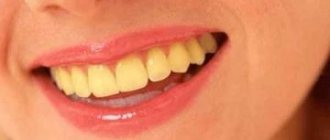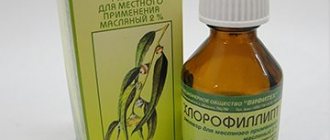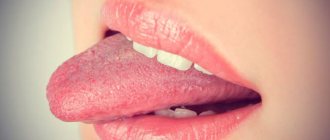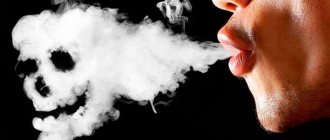The tongue is an indicator of the health of the whole organism. In an adult healthy person, the tongue is pale pink with well-defined papillae. A small amount of whitish coating on the tongue is normal and not a cause for concern.
The coating on the tongue may vary depending on the time of year. In summer, in hot weather, with a lack of fluid and dry mouth, the plaque becomes denser, acquiring a yellowish tint. Soft temporary deposits on the tongue are not a symptom of the disease, do not cause discomfort to the patient, clean well and disappear quickly.
But if the plaque persists, is poorly separated from the mucous membrane of the tongue, and bad breath appears - all these are signs of the development of pathological processes that require consultation with a doctor.
Possible reasons
Plaque is nothing more than bacteria that accumulates on the tongue.
A healthy non-smoking person may normally have a thin white coating through which the structure of the tongue can be seen - the result of the accumulation of natural microflora bacteria that live in the oral cavity and feed on food debris and epithelium. But if the plaque becomes opaque and dense, and acquires a yellow or gray tint, this indicates the proliferation of pathogenic bacteria, which, in turn, indicates possible health problems. The reasons for the formation of plaque on the tongue can be divided into two groups:
- influence of external factors;
- functional disorders in the functioning of internal organs.
The first group includes factors such as smoking, poor oral hygiene, abuse of drinks containing theine and caffeine, and taking antibacterial drugs. This also includes the use of products containing natural or chemical dyes.
The second group includes a whole “bouquet” of troubles: diseases of the gastrointestinal tract, liver, gall bladder, infectious diseases, dental problems, general decreased immunity, etc. The accompanying plaque on the tongue will disappear only after the underlying cause has been eliminated disease.
Professional cleaning of smoker's plaque
To remove smoker's plaque, the Air Flow method was used, in which a mixture of cleaning powder and water is applied to the teeth through a special nozzle under pressure. This cleaning method effectively removes plaque from all hard-to-reach places.
Hard plaque and tartar are removed using ultrasound. To restore the mineral composition of the enamel and increase its protective properties, apply Tuss Moose cream in a mouth guard to the teeth for 10 minutes.
What happens in the body
The most direct connection between smoking and the occurrence of plaque is that toxic tobacco smoke disrupts the balance of microflora and leads to the death of beneficial microorganisms, which are replaced by pathogenic bacteria - for example, fungi of the genus Candida, which cause candidiasis. The plaque has a white or grayish tint, and in appearance resembles cottage cheese.
But there are also more serious consequences of smoking. It is no secret that nicotine contributes to irritation of the mucous membranes of the oral cavity and digestive organs, constriction of blood vessels, suppression of the immune system, which can lead to the development of various diseases: gastritis, gastric ulcers, enteritis, impaired outflow of bile, cholecystitis, pancreatitis, etc. Sustained coating on the tongue may indicate their occurrence or exacerbation. So, when the liver is not functioning properly, it acquires a yellow tint, when bile stagnates, it becomes greenish, and in case of chronic stomach problems, it becomes brown. Moreover, the denser the plaque, the more intense the disease.
How does smoking affect a person's language?
Smoking has a detrimental effect on the entire oral cavity, nasopharynx, bronchi and lungs.
Keep in mind! All mucous membranes are affected by toxic hot smoke. First of all, the tongue is negatively affected.
Nicotine affects the sensitivity of taste buds, which leads to a significant decrease in the sense of taste of food.
Medical studies have proven that smokers and non-smokers have significantly different taste sensitivity thresholds.
This indicates that nicotine contributes to the morphological and functional restructuring of taste buds.
Taste buds not only help you enjoy the taste of food, but also influence the process of salivation, digestion, and the secretion of gastric juice.
How to deal with it
So, you notice a coating on your tongue - what to do?
First of all, you need to analyze your diet - perhaps the change in tongue color is caused by eating certain foods and will soon go away on its own.
If the plaque is difficult to remove, and after a while it appears again, then it is most likely caused by internal disturbances in the functioning of the body. In this case, you have serious reasons to consult a doctor. The specialist will conduct a study, establish a diagnosis, prescribe treatment, recommend diet and preventive measures.
And finally, you should get rid of exposure to harmful factors - reduce your consumption of tea and coffee, regularly clean not only your teeth, but also your tongue. And, of course, quit smoking - otherwise all your efforts to get rid of plaque will be in vain, and the problem will arise again and again.
Is there life after smoking?
Tobacco smoking is one of the leading causes of so-called preventable death. This fact has been reliably established, repeatedly confirmed in longitudinal studies on large samples, and is probably known to everyone. In other words, smokers actively and purposefully shorten their lives, knowing full well that this addiction is not just harmful, but literally destructive, and for several key systems of the body at once.
Many, of course, have been thinking for a long time that it’s time to give up this habit. But in most cases, two considerations stop one from taking a decisive step: abstinence is scary and the benefits are doubtful. There are already enough health hazards around, so is it worth depriving yourself of the last joy?
In fact, surveys show that many smokers fear that it will take too much time and willpower to achieve any tangible positive changes in health and well-being. However, the real scenario in this regard is much more dynamic than most people think.
The benefits of quitting smoking are felt within an hour after the last cigarette smoked - if you firmly decided that the cigarette was your last - and only good news follows.
To give up smoking. Fast Facts
Here are just the key points regarding quitting smoking. More detailed information is in the main part of the article.
* Quitting smoking means breaking the cycle of addiction (psychophysiological dependence) and radically reconfiguring the brain so that it weanses the habit of humiliating nicotine slavery.
* In order for the first attempt to quit to be successful, a person must have a clear plan to counteract provoking factors, withdrawal syndrome and the habit of reaching for a pack of cigarettes.
* The direct benefits of the decision begin to show within an hour.
* The sooner this step is taken, the faster the risk of cancer, heart and lung disease, and many other serious conditions directly related to smoking will decrease.
Time scale
If you think a little, you will easily understand why you are so irritated by endless howls, warnings and horror stories about the dangers of smoking. The point is not that there are too many anti-nicotine advertisements and they have long become boring with their dull monotony. The real reason is that all this is true, and you yourself understand that it is true, and you really don’t want to be reminded of it again and again.
In addition, you know very well what you will have to part with when you quit smoking. And you’re probably feeling sad in advance. But much less is said and written about whether you will get anything in return - and if so, what exactly. It's not fair.
Guided by the principles of evidence-based medicine, relying exclusively on data confirmed and published in reliable sources, we simply inform you about how life will develop after smoking, in what aspects and why it will change. Below is a kind of “storyboard,” as they say in Hollywood, a timeline on the editing table, a graph of events and processes in your body along the time axis.
In one hour
About 20 minutes after you smoke your [last] cigarette, your heart rate begins to drop and your circulation tries to get back into the optimal mode it has been stubbornly trying to do for all your years of smoking.
In twelve hours
Cigarettes contain many well-known toxins, including carbon monoxide, i.e. carbon monoxide, i.e. CO, i.e. carbon monoxide. It is very poisonous and especially dangerous because it is colorless and odorless; in high concentrations it is fatal, in slightly smaller concentrations it leads to serious damage to the central nervous system. The bottom line is that if you inhale a certain volume of this substance in a short time, it reacts with hemoglobin, resulting in hypoxemia (lack of oxygen in the blood) and hypoxia (general oxygen starvation of tissues and organs), in other words, suffocation.
So, if by some miracle you last twelve hours without a single cigarette, then this time will be enough for the body to get rid of excess oxygen oxide. The natural gas composition of the blood will be restored, that is, its gas exchange function will return to normal.
In a day
A day after the last cigarette smoked, the probability of the so-called gradually decreases. vascular accidents - a serious heart attack or stroke.
The predisposition to coronary heart disease in a smoker is due to a lack of so-called. “good cholesterol” (see “Medical myths. All about cholesterol”). In addition, smoking increases blood pressure, significantly increasing the likelihood of blood clots and the risk of stroke.
Even if not immediately, but within a day after quitting smoking, high blood pressure begins to steadily decrease. At the same time, the level of saturation (oxygen saturation in the blood) increases, which significantly facilitates any physical activity and “clears your head.” It’s tempting to learn some useful habit—unless, of course, you push these thoughts away—for example, start running in the morning, doing push-ups, or otherwise regaining your former shape. If you thought this was written as a joke, then no, this is quite serious and physiologically natural. You will really feel: your whole body is happy and asking for activity.
After two days
Smoking damages the nerve endings responsible for the perception of smell and taste. This, of course, cannot be compared with what the damned coronavirus can do, but the mechanism is approximately the same. So, when you quit smoking, after just a couple of days, an effect occurs that is familiar to absolutely any former smoker: a person is surprised to discover that the world around is full of smells, and food carries much more flavor nuances than was felt before.
After three days
After three days, the concentration of nicotine metabolites in the body begins to decrease significantly. Of course, it would be better if it did not increase, but since you have smoked, it is the removal of these compounds from biochemical cycles that leads to withdrawal syndrome. For some time, most former smokers become irritable, experience headaches and what seems to them an irresistible need to smoke. In fact, it can be tolerated. Very, very many people have gone through this - and are still alive!
Note translator-editor of the Lakhta Clinic. – I can competently confirm from my own experience: the consciousness that you have stood, for example, for three days, five hours and twenty minutes without cigarettes, that you continue to hold on, breathe deeply and, it seems, will still be able to break free - all these sensations strength significantly exceeds both the “pangs of withdrawal” and the dubious pleasure of smoking. This is pride, this is freedom, this is a very special drive, and you always want to talk to someone about it (though, some interlocutors get scared, irritated or downright bored, but let them be patient). There will be all sorts of other things - there will be situations, there will be temptations at every step, there will be dreams. Personally, I kept dreaming for a long time, and the dreams were of a nightmare nature: as if I had lost my temper and was smoking again…. and what a joy it was to wake up and realize that it was just a dream! A very dangerous period is when you seem to have already quit, and there seems to be nothing more to be afraid of, and one tiny little cigarette, one puff won’t hurt…. STOP. Don't believe it under any circumstances. This rubbish knows how to wait and knows how to persuade. I will share, again, my own experience - I told myself from the very beginning: you are sick, you are a drug addict in remission, now, after all, you are at war and this will be for a long time, and if you take too long, then all the previous days and the hours are canceled, and then why was all this?! And if you try to smoke in three years, you will be surprised at how disgusting it is. In general, ladies and gentlemen, it is possible and necessary to survive. So give up boldly, don’t be afraid of anything and don’t try again!
A month later
Within a month, lung function begins to gradually recover. As they heal (and they got it badly) and their breathing volume increases, the former smoker clearly notices how shortness of breath and habitual cough go away. Endurance also increases noticeably, and if a person regularly engages in exercise or other physical activity, this has a noticeable effect on the results.
In one to three months
During the first few months, normal blood circulation continues to be restored.
Nine months later
The lungs need about nine months to become more or less healthy. The fine, hair- or eyelash-like structures in the lungs are cleared of tobacco tar deposits. This is important in terms of evacuating mucus from the lungs and effectively combating infections. And, as the lungs begin to function at full capacity, the incidence of acute respiratory diseases decreases.
In a year
A year has passed since I smoked my last cigarette. The risk of coronary heart disease, of course, is not zero, but during this time it has decreased by approximately half, and continues to decline to the general population level.
In five years
And again about the numerous toxins that, as everyone knows, are contained in the smoke of smoldering dried tobacco. There are over four hundred such toxic substances. Some of them aggressively attack the walls of arteries and other blood vessels; this same group of toxins dramatically increases the likelihood of blood clots.
After five years of smoking-free life, the lumens of the blood vessels expand, and the walls regain their former tone. The risk of thrombosis and, as a result, ischemic stroke is reduced, and this healing process will continue over the next ten years.
After ten years
After ten years, the likelihood of developing lung cancer and related premature death is reduced by about half compared with those who continue to smoke. The risk of cancer of the oral cavity, larynx, and pancreas is also significantly reduced.
Fifteen years later
After fifteen years of complete smoking cessation, the probability of coronary heart disease is compared with the average level of this indicator for non-smokers. The same goes for the risk of pancreatic cancer.
Twenty years later
After twenty years, the risk of premature death from causes clearly and reliably associated with smoking, including cancer and pulmonary diseases, decreases to the statistical level characteristic of samples of people who have never smoked.
Eventually
Smoking is not just a “bad habit”. This is a very dangerous addiction, leading to serious illness and premature death. When a person quits smoking, self-cleansing and restoration processes immediately and guaranteed begin in his body, which over time leads the main systems to a state characteristic of non-smokers and never smokers.
Some positive effects, such as normalization of blood pressure, occur almost immediately. Others, for example, reducing cardiac, pulmonary, and oncological risks, acquire significance after several years. However, it is important to understand that your health and medical prospects will improve with every day, month, and year you live without cigarettes - improve constantly and regardless of you.
Give it up.
Based on materials from Medical News Today
See also the articles “Lung Cancer” and “Medical Myths. Lung cancer".
Can a smoker get tongue cancer from smoking?
When smoking, the tongue is the first organ to take the hit of nicotine. With constant smoking, the organ receives microtraumas, which increase over time. Also, other formations that can develop into cancer may appear on the mucous membrane due to tobacco smoke.
IMPORTANT! Tongue cancer is dangerous because it can only be diagnosed in late stages, and it develops rapidly.
The first signs are the appearance of ulcers and seals. At the beginning of the disease, ulcers and seals have clear boundaries, but as it progresses, the boundaries are erased, and the edges rise upward and resemble rollers in appearance.
Over time, the smoker develops pain, swelling of the face, and difficulty opening the mouth and, accordingly, eating.
Uvula body cancer
The most common type of oncology. The malignant neoplasm affects the middle of the tongue, as well as its lateral parts.
Tongue root cancer
Root damage is characterized by severe pain when swallowing food. This type of oncology is less common compared to the previous one.
The disease also has a second name - oropharyngeal cancer. In this case, the tumor is located at the back of the mouth.
The pathological process is aggressive and treatment is extremely rare.
Cancer of the lower part of the uvula
The pathology is characterized by the presence of a tumor on the lower part of the uvula. In rare cases - under the tongue.
Experts consider three types of neoplasms on the tongue:
- Ulcerative. The disease begins with the appearance of a lump that develops into an ulcer. In this case, the ulcer bleeds almost constantly, and the patient feels severe pain.
- Infiltrative. The tumor that appears in this case is solid. And she herself is covered with white spots. The patient complains of severe pain in the affected area.
- Papillary. The tumor is hard, rises above the rest of the tissue, and is characterized by dense plaques.
What dangers can plaque and untimely removal pose for a smoker?
We have already said that plaque is not only unsightly, but also dangerous. The formation of plaque indicates tissue destruction, and therefore a deterioration in the functionality of the organ. Its main function is taste sensitivity and transmission of further signals to the brain. If no signals were received, the body did not understand that the digestion process should begin. It is for this reason that digestive problems occur.
Also, plaque in a smoker is a sign of the presence of viruses and microbes that, with saliva, enter the internal organs through the mucous membrane. All harmful microorganisms continue to multiply in the body, disrupting the functioning of each organ separately.
Oral hygiene devices
If the coating is dense and has already acquired a yellowish or brown tint, then it is recommended to combat it with the help of special devices.
Spoon. It resembles a spatula and is made of durable plastic that bends well. The algorithm for use is simple: place it as close to the tongue as possible and move it from base to tip.
REFERENCE! The special device can be replaced with a regular silver spoon.
Scraper. The device is somewhat similar to a loop. They are also made from highly flexible plastic and have dense, tiny bristles on the surface.
Toothbrush. Most modern toothbrushes are characterized by the presence on the back of silicone inserts designed to clean the tongue. It is important to pay attention to this point when purchasing a brush.
IMPORTANT! Procedures for removing plaque should be carried out twice a day. Otherwise, all efforts will be in vain. It is also important to remember that all of the listed items are personal hygiene devices and should only be used individually; you cannot purchase one spoon for all family members. This only increases the risk of developing oral diseases.
Treatment
Therapy begins with examination and examination. It is important to establish the cause of the plaque. It is clear that a person cannot do this on his own. For preventative purposes, to reduce the amount of deposits, it is important:
- Remember the rules of oral hygiene. You should brush your teeth two to three times a day. Moreover, this must be done carefully and carefully, without making rough traumatic movements. It is important to use a good brush and quality toothpaste.
- Use dental rinses throughout the day. You cannot skimp on the funds of this group. Cheap formulations include harmful mixtures and, if used regularly, negatively affect oral health.
- Periodically clean your tongue with a special spoon. Movements should go in the direction from the root to the front.
It is extremely important not to forget about professional oral hygiene. It is indicated even for people who take very good care of their teeth. During the procedure, the doctor uses an ultrasonic scaler, which removes both soft and hard dental plaque. Thanks to this, there are much fewer places where pathogens can spread.











